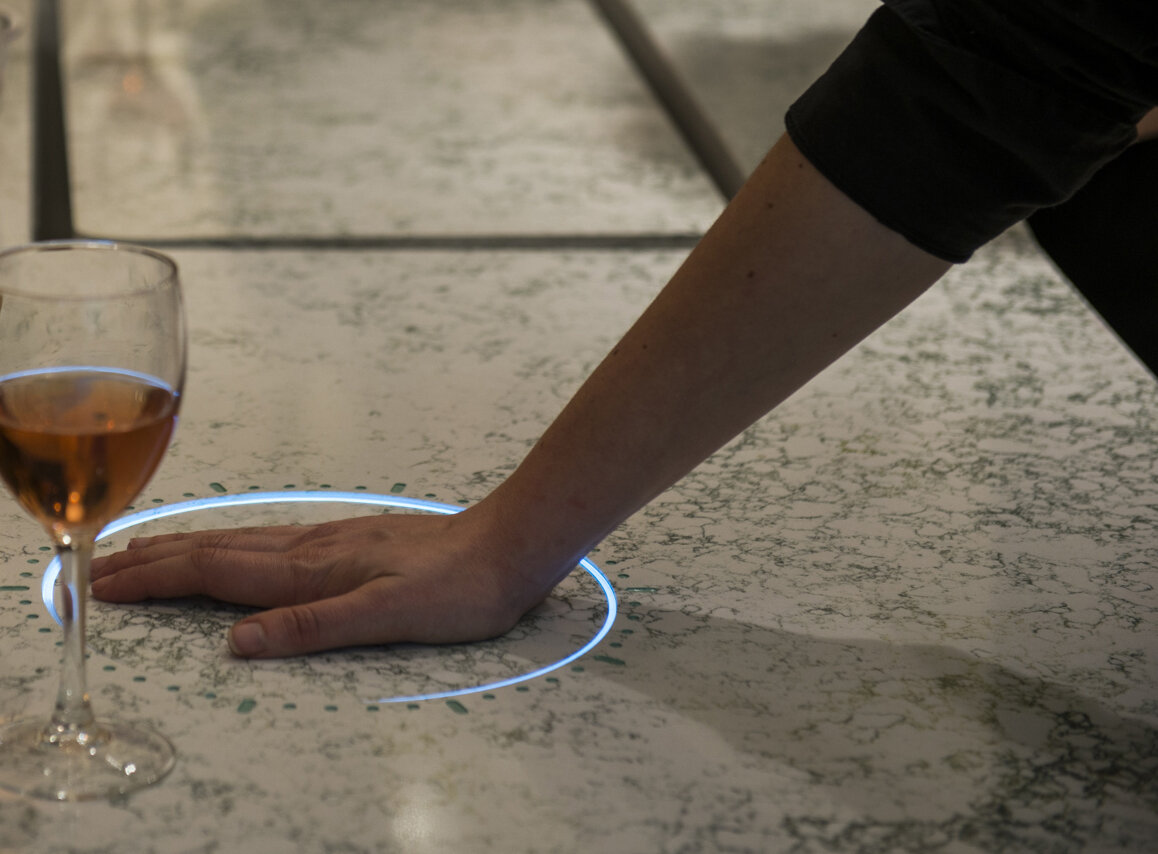Part 2: What are the main developments on the horizon for home tech?
The Future of Home Technology
Part two of this two-part series looks at advances in smart tech for the home room by room.
By Helen Mitchell, Chief Strategy Officer. First published in Designer Magazine, November 2020.
The Living Room
The living room – the centre of our home entertainment expectations - is where smart devices have traditionally been the most focused, with the TV screen at the heart of that, but will they even exist in years to come? For now, hybrid solutions are turning every which way to try and second-guess consumer preferences. New adaptations include LG’s rollable 65” OLED screen, which can be compacted almost entirely when not in use and Samsung’s 43” rotating Sero TV, which automatically matches the orientation of a mobile phone or tablet when turned horizontally/vertically, making it ideal for portrait-mode content from sites such as Youtube or TikTok. Chinese tech company Changhong’s Chiq Spin screen, meanwhile, can flip to reveal a bookshelf on its vertical axis.
Whilst 8K resolution is still in its infancy, numerous models from LG, Samsung and Sony are launching or have launched in 2020. The other major advance in TV tech is Filmmaker Mode, with major brands including Samsung, Philips, LG and Panasonic adding this new mode to ensure consumers can enjoy films and television episodes just as their creators intended, maintaining original aspect ratios, colour and frame rates.
The Kitchen
The second most-designed-for room is of course the kitchen. Italian brand Pedini has now developed AI features that respond to voice and you can ask its App to change your kitchen’s mood and lighting, open cupboards or update you on what’s needed for your grocery order, whilst the Tulèr concept kitchen features integrated modular technology that can open drawers or activate countertop scales with just the brush of a hand. From Moen, the U smart faucet is the first of its kind: a hands-free faucet that can dispense as little as a tablespoon of water, at exactly the desired temperature.
The refrigerator, one of the major focus appliances for kitchen tech, can now do much more than just keep your food cool. Features include setting meal schedules for your family; having recipes read to you while you cook, transparent touchscreens to look inside without opening or being alerted to food expiry dates. When it comes to cooking, the Julia multicooker by Hong Kong-based CookingPal can perform multiple actions including weighing, chopping and boiling, whilst giving step-by-step video guidance, and can also self-clean.
The Home Gym and Health-Centre
In-home smart healthcare offers the potential to reduce some of the stress put on traditional healthcare channels by increasing life expectancy and a growing elderly population, from wearables that help us to lead a healthier lifestyle by monitoring activity levels, quality of sleep, and nutrition to devices offering interventionist services, allowing us to remotely connect with medical practitioners or alert carers when an elderly person falls in their home.
For those wanting a more pro-active approach, NordicTrack’s X32i treadmill offers on-demand class settings or virtual trails in locations around the world. A personal trainer on the other side of the screen will auto-adjust variables such as speed and push you towards your goals. For fans of yoga or meditation, fitness platform Peloton’s new App for Amazon Fire enables users to join interactive classes from elite trainers in any room boasting a smart TV.
The Bedroom
Lack of sleep is an issue for huge number of people, with tech’s increasing tendrils in the home often cited as a contributor – though tech ironically also seems to have the answers. US-based manufacturer Sleep Number is releasing the Climate360 smart bed with a climate-control mattress that can cool or warm up to 37°C to aid sleep, whilst South Korean company TenMinds has designed the Motion Pillow, which claims to stop snoring via four pressure-sensing airbags that automatically inflate or deflate in response to a snore-monitoring box with built-in microphones. If your sleep is determined by the amount of sleep small people in your house are getting, then the MamaRoo sleep bassinet may be the answer; a baby-rocking device that uses natural movements to calm and soothe.
The Bathroom
Spa-like experiences will soon be a feature of most new-build homes, but developments here haven’t sped up as quickly as many would like. We’re still waiting for digital assistants to start our bath, fill it to the right temperature/depth and release relaxing brain waves and aromatherapy. Nose-geared gadgets are in the works, however, to help create your bespoke aromatherapy sessions. As for the other key bathroom activity, Charmin’s Bluetooth-enabled Rollbot delivers a fresh toilet roll directly when needed, whilst also promoting its new SmellSense concept: a bathroom sensor with an LED display to alert homeowners when it’s ‘safe’ to enter after measuring gas toxicity levels. Very civilised!
Missed Part 1?
Find out about the technology for the house itself and its inhabitants.
Image courtesy of LG
Images courtesy of Tipic (Tulèr). Photography by Marco Del Maso and Giorgio De Vecchi.
Image courtesy of NordicTrack
Image courtesy of KOWAVE (Motion Pillow)
Thank you for reading.
We’d love to hear your thoughts. Post a comment below or if you would like to find out more, please do get in touch.





